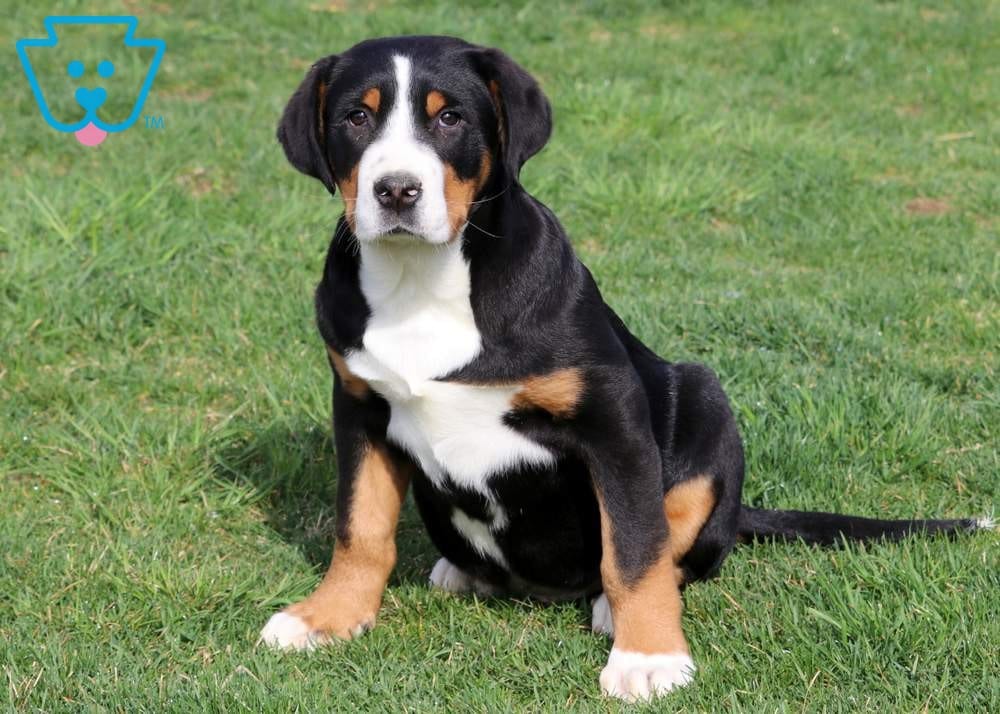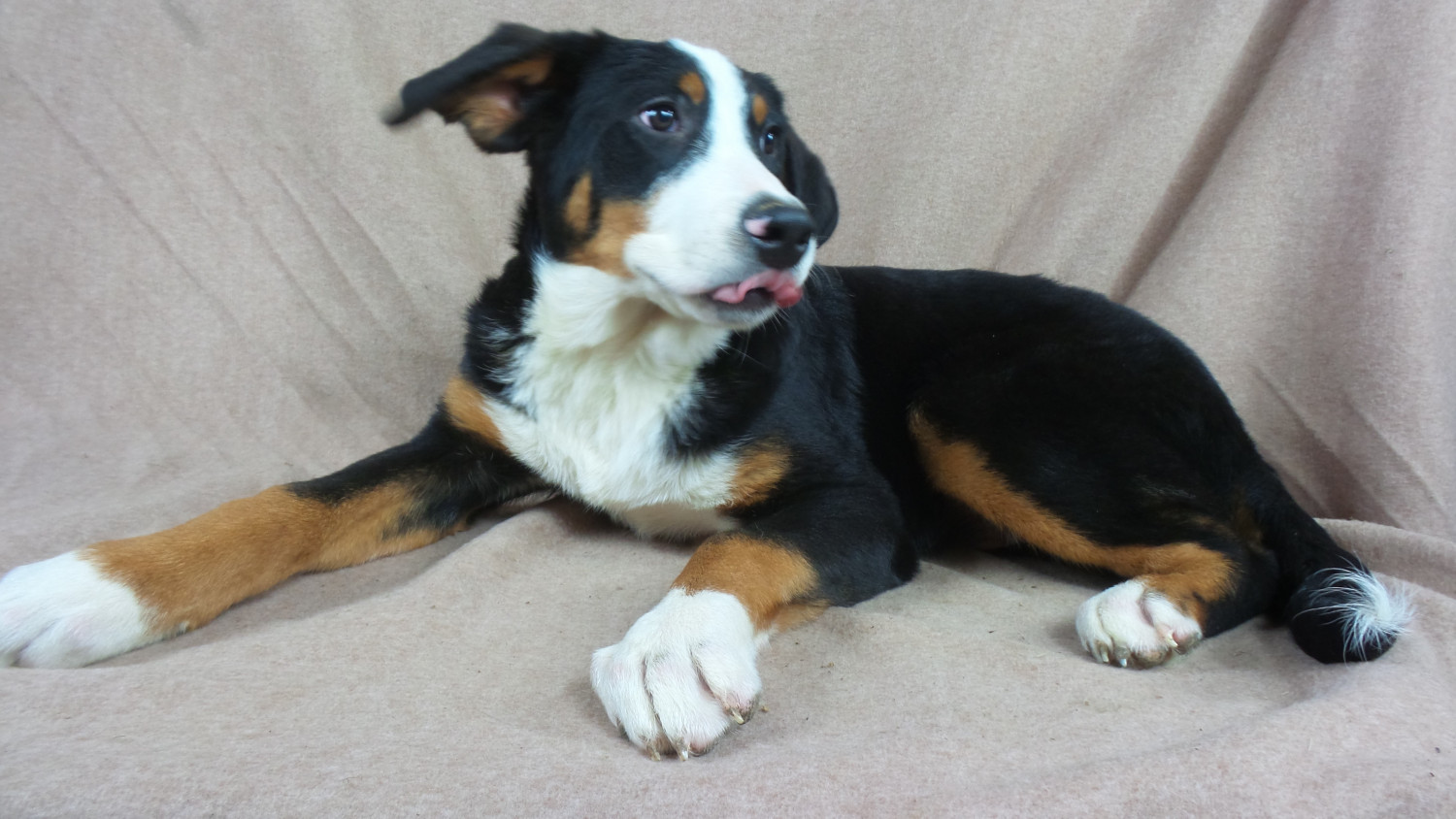

Vers la fin du 19e siècle, on présumait que la race avait disparu, mais en 1908, un cynophile expert de Zurich vit un grand bouvier suisse et encouragea les éleveurs à trouver d'autres spécimens pour sauver cette ancienne race alpine. Comme le bouvier bernois, il aidait le fermier et le boucher en gardant et en conduisant le bétail et servait aussi de chien de trait.
#GREATER SWISS MOUNTAIN DOG PLUS#
La plus grande – et probablement la plus ancienne – des quatre races de bouvier suisse, le grand bouvier suisse descend des mâtins qui accompagnaient les légions romaines de César. Regular brushing is all the grooming needed.

The coat is the typical Swiss tri-colour – deep, lustrous black with white and tan trim on the feet, face, chest and tail.

The short, thick, dense coat is weather-resistant. The Greater Swiss was admitted to the American Kennel Club’s Working Group in 1995.Įasygoing and obedient with an even disposition, the breed is said to be both bold and faithful.Īlert and vigilant, this powerful breed is energetic and eager to work.Īn adult male may stand 25.5-28.5 in (65-72 cm) at the shoulder and weigh in the neighbourhood of 130 lb (58.5 kg). The breed was gradually reclaimed in its native land and spread to other countries. In the late 19th century, it was assumed the breed had died out but in 1908, a famous dog expert of Zurich saw a Greater Swiss and urged breeders to find other specimens and save this ancient Alpine dog. Like the Bernese Mountain Dog, this breed was used to assist the farmer and butcher by guarding and driving livestock and by pulling carts. The largest – and perhaps the oldest – of the four Swiss mountain breeds, the ‘Swissy’ descended from mastiffs that accompanied Caesar’s invading legions.


 0 kommentar(er)
0 kommentar(er)
